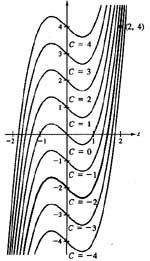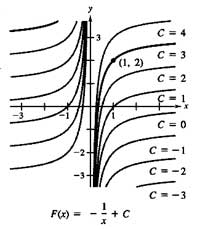
To do this, we need only know the value of F(x) for one value of s.
This information is called an initial condition.
For example, in the left hand-side figure, there is only curve that passes through the point (2,4). To find this particular curve, we use the following information.
|
|
|
| General solution | |
| F(2) = 4 | Initial condition |
Thus, we obtain
|
|
| Particular solution |

